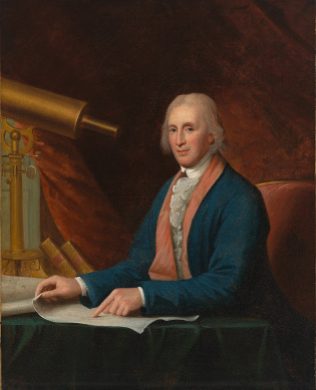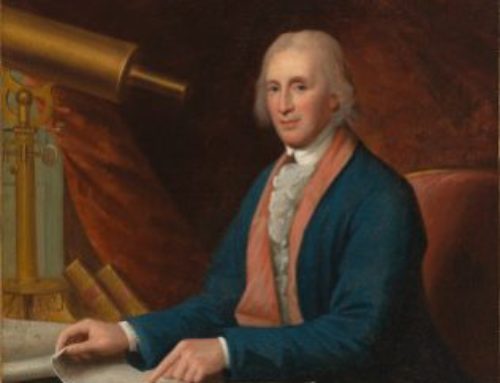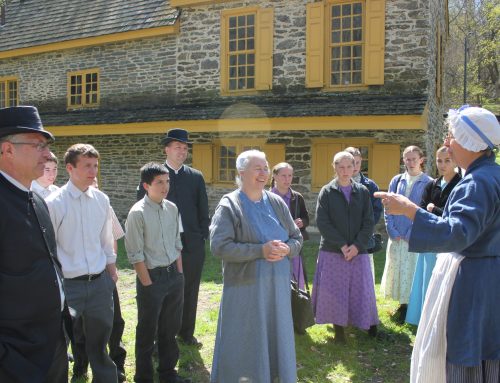David Rittenhouse (1732-1796), noted scientist and astronomer, witnessed a total solar eclipse on 24 June 1778. The eclipse began in the middle of the Pacific Ocean, passed over southern California and very close to Philadelphia where Rittenhouse carefully observed and recorded the event. His findings were published in one of the first volumes of the American Philosophical Society. Rittenhouse received a letter the following month from his colleague, Thomas Jefferson, who was frustrated by clouds in Virginia. Jefferson wrote: “[we] were much disappointed in Virginia generally on the day of the great eclipse, which proved to be cloudy. In [Williamsburg], where it was total, I understand only the beginning was seen.” By all accounts, Rittenhouse had an unobstructed view.
Rittenhouse, a keen observer of a number of 18th century celestial events, was also witness to the Transit of Venus on 3 June 1769. His careful recording of the movement of Venus across the face of the Sun enabled him to calculate the distance from the earth to the sun with great precision.
This portrait of David Rittenhouse by Charles Willson Peale depicts Rittenhouse as the second President of the American Philosophical Society following the death of the Society’s first President, Benjamin Franklin in 1790. The telescope at the left was made by Rittenhouse for his friend and colleague, Franklin, who willed it back to Rittenhouse. Rittenhouse is wearing a jacket of Franklin’s and is pointing to the record he made of the 1769 Transit of Venus.
David Rittenhouse was born in 1732 at the 1707 Rittenhouse Homestead in Historic RittenhouseTown. He is buried at Laurel Hill Cemetery.






Didn’t know that David Rittenhouse was a Scientist